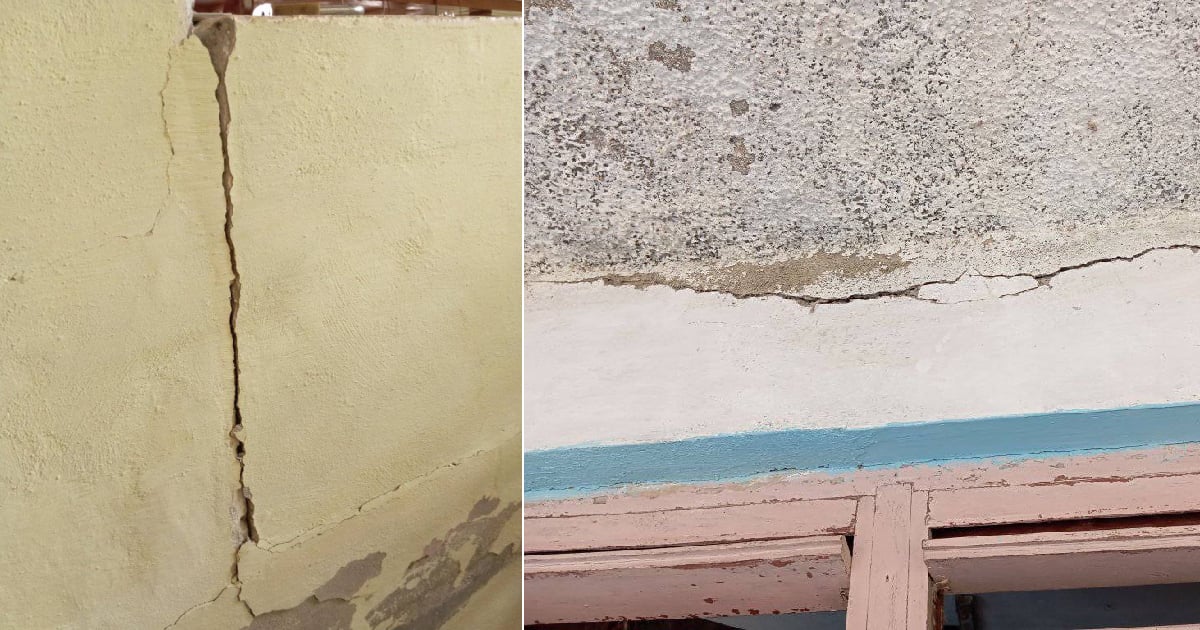A resident from Campechuela in Granma province, a young woman named Shakira Castillo Pérez, has exposed the damage inflicted by the November 10 earthquakes on her home and her neighbor's. She expressed her frustration over the lack of governmental response to the affected families. Castillo shared photos on the Facebook group "Somos de Campechuela," showing the cracks in walls, ceilings, and structures resulting from the quakes measuring magnitudes 6 and 6.7 that struck eastern Cuba the previous Sunday.
"Look, my people, at how my house and my neighbor's ended up after the November 10 earthquakes," Castillo lamented in her post. "No one has bothered to assess the damage to Campechuela's residents, and if anyone does come, it's because I'm posting this," she continued. Concerned about the structural risks, Castillo noted that an elderly person and a pregnant woman live in her household. "And like these two homes, there are others in worse conditions, yet no one responds," she warned.
Seismic Aftershocks and Government Response
The National Center for Seismological Research (CENAIS) reported a staggering 4,060 aftershocks from the November 10 earthquakes by Sunday morning, with around 101 likely felt by those near the active zone southeast of Pilón in Granma province. The Cuban government disclosed that 8,612 homes suffered damage, with 156 collapsing entirely and 5,968 experiencing minor issues.
Official statistics reveal that, alongside the recent quakes, natural disasters including Hurricanes Oscar and Rafael have damaged approximately 46,400 homes across affected provinces such as Guantánamo, Artemisa, Mayabeque, Havana, Santiago de Cuba, and Granma.
Construction Minister René Mesa Villafaña stated that over 80% of hurricane-induced damages involve partial and total roof destruction, potentially speeding up recovery efforts. However, he emphasized that earthquake-related damage assessments require deeper certification work by sector experts, including engineers and architects.
Urgent Need for Improved Construction Standards
The recent earthquakes have starkly revealed the alarming vulnerability of many Cuban buildings to seismic events of moderate or significant magnitude. This issue not only impacts Granma, the epicenter of the quakes, but also other earthquake-prone provinces, highlighting the urgent need to enhance construction quality and safety across the country.
Geological engineer and CENAIS coordinator in Granma, Eberto Hernández Suros, pointed out that widespread building deficiencies largely stem from violations of Cuba's seismic code, established in 2017. This underscores the critical necessity for stricter adherence to construction standards to safeguard the population against future seismic threats.
